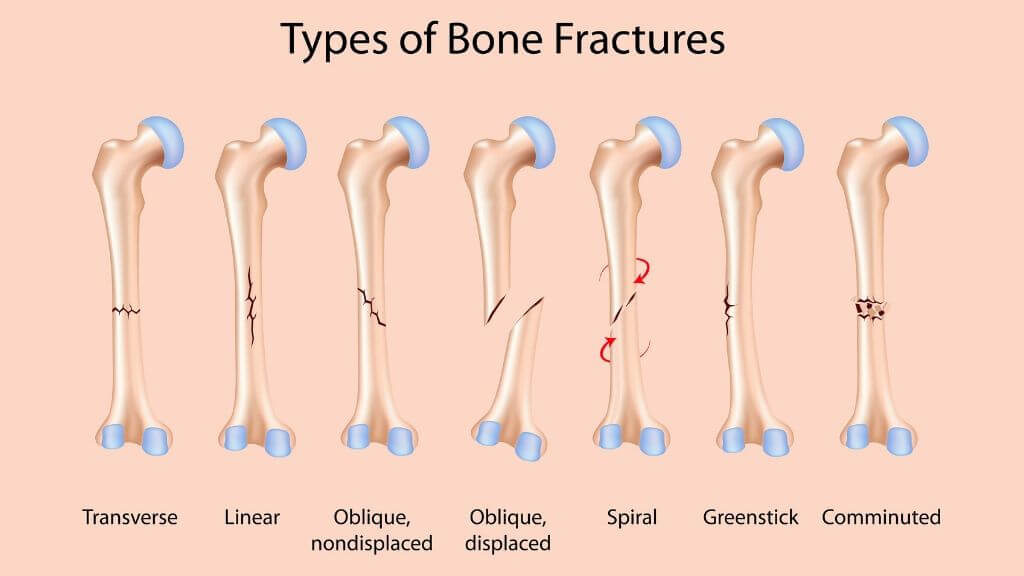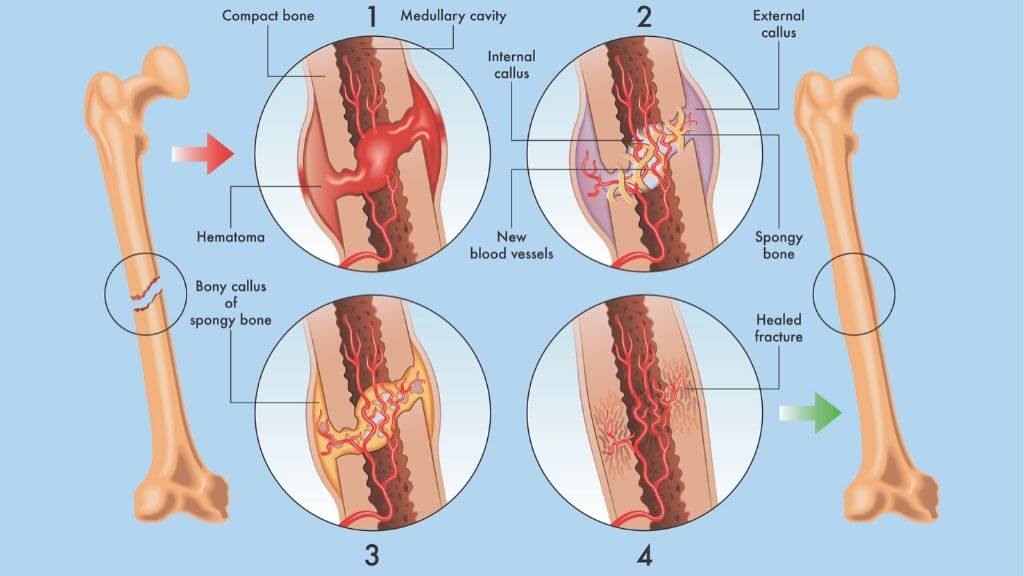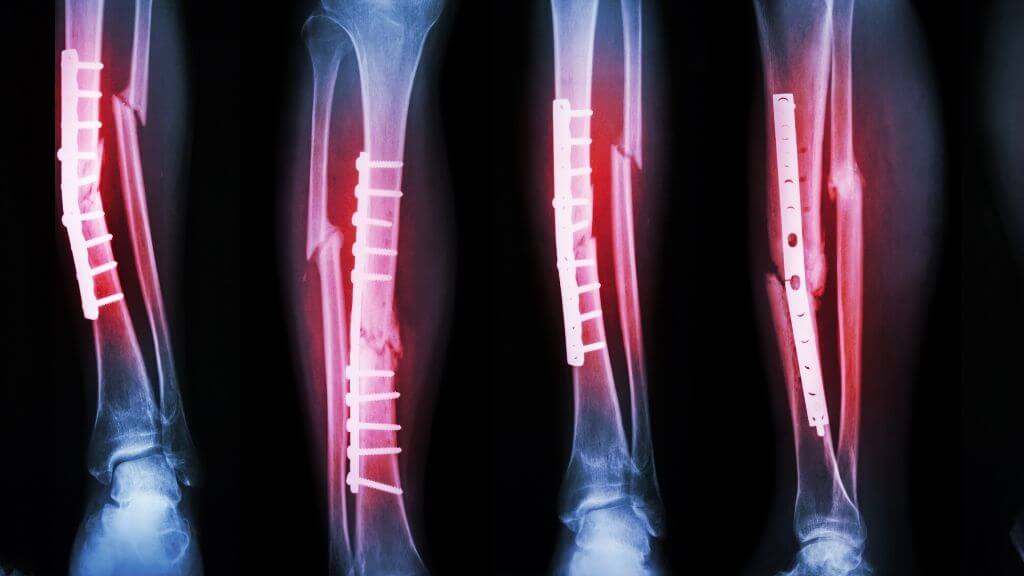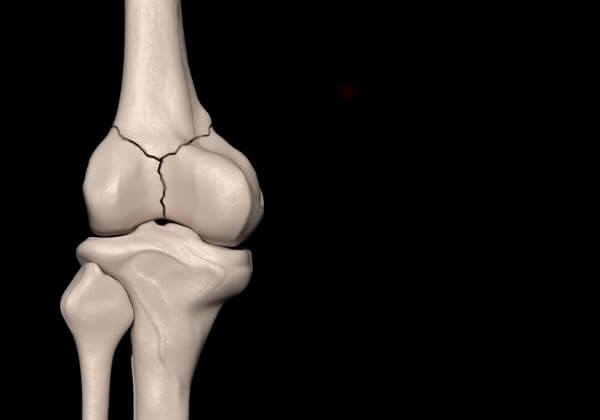A fracture is another term for a broken bone. Fractures can be anything from a small crack in the bone to a full break, and they can occur across the bone, along the length of the bone, or in several places.
Fractures can also be in several different pieces. The majority of fractures occur when the bone becomes impacted by a large force, and it is important to seek immediate medical help if you think you have a fracture.
What Causes Bone Fracture
When a bone is placed under more pressure than it can handle or is impacted with a great force, it can fracture. A force able to cause a fracture will usually be intense and sudden, and the strength of said force will determine the severity of the fracture.
The most commonly reported causes of fracture are:
♦ Falls
♦ Injuries from sports
♦ Traumatic events such as car accidents
♦ Direct blows or strikes to the body
Symptoms of Bone Fracture
Fractures are typically accompanied by intense pain at the time the injury first occurs. This pain can get worse whenever you move the injured area. In some cases, individuals can faint from the pain being so intense, and bones pieces have been visible, poking through the skin.
In addition to this, you may also experience:
♦ Swelling, redness, and bruising around the injury site
♦ A grinding or snap sound
♦ Difficulty supporting weight with the injured area
♦ Visible deformity
Types of Bone Fracture
A fracture can be classified according to two dimensions.
Open vs. Closed Fractures
A closed or simple fracture is when the bone does not break the skin, whereas an open or compound fracture results in the ends of bones tearing through the skin.

The exposure of bone or other tissue under the skin increases your risk of infection, so it is more dangerous than a closed fracture.
Complete vs. Incomplete
Your bone does not completely break with an incomplete fracture. This type is more common among children because their bones are softer than adult bones. This softness allows the bones to bend rather than break.
In this type, the bone will crack but not break through the skin and can include:
♦ Hairline fractures, which involve a think crack
♦ Greenstick fracture, which is when one side of the bone is bent, and the other is broken
♦ Torus (or buckle) fracture, which is when the bone is broken on one side and has a bump or buckle on the other side.
Complete fractures involve breaks through the bone or snapping of bone into separated pieces.
The types of complete fractures you can get include:
♦ Single fracture is where the bone is broken in one place
♦ A comminuted fracture is where the bone is crushed into three or more pieces
♦ A compression fracture is where the bone collapses under extreme pressure
♦ Nondisplaced fractures happen when the bone breaks into pieces, but they remain in normal alignment
♦ A displaced fracture happens when the bone breaks and the pieces are moved from normal alignment
♦ Segmental fracture is where the bone is broken in a way that one piece is left unattached and floating
Diagnosing a Bone Fracture
You need to get medical attention right away if you think you have a fracture. Left untreated, you can end up with serious and irreversible damage.

Your doctor will need to know what symptoms you are having as well as your recent activities to determine what the cause of the fracture may be. They will also conduct a physical examination of the injured area and will order x-rays to confirm a diagnosis.
X-rays are the only way to determine the exact location and nature of a fracture. Doctors may also order CT or MRI scans to get additional images of the bones and surrounding tissues for further diagnostic accuracy.
Treatment of a Bone Fracture
The treatment for a bone fracture depends on the type and location. In most cases, doctors try to put broken bone fragments back into their proper places and stabilize them during healing.
Broken bone pieces need to remain immobile to ensure proper healing. New bone forms at the edges of the broken pieces, and if they are aligned and stable, the new bone that is formed will connect the broken pieces together. Casts, made from either plaster or fiberglass, are used to stabilize the bones and prevent movement.
In some cases, although it is rare, traction is needed to stabilize an injury. This stretches your muscles and tendons attached to the bone and are created by a system of pulleys and weights positioned in a frame over the bed. This system creates a gentle pulling motion that will stabilize the injured area and allow the bone to heal.
More complex fractures may need surgery, such as open reduction, internal fixation, or external fixation.
♦ Open reduction and internal fixation involve repositioning the broken bone into proper alignment. The pieces are then connected using screws or metal plates and sometimes both.
♦ With external fixation, pins and screws are placed into the bone above and below the fracture site, and these pins are connected to a metal bar positioned outside the leg. The bar holds the pins and bone in place as it heals.
Medications are almost always prescribed to help reduce pain and inflammation as the bone heals. Medications also help to prevent infections in cases where the bones had broken through the skin or when surgery was required.

Depending on the extent of the injury and how much time you have spent off the injured area, physical therapy may be required to help you regain regular and normal use again.
Natural Treatment for Bone Fracture
Bone fractures need medical attention and treatment. However, there are steps you can take to enhance bone strength. Weakened or brittle bones (as caused by osteoporosis) are more at risk for fractures.
You can't always avoid accidents and injuries, but you can prevent serious damage, and there are natural ingredients that can protect your bones.
Enhance bone strength naturally, and reduce the risk of fractures with these high-quality and clinically proven ingredients:
♦ CalZbone: This beneficial Cissus quadrangularis extract supports bone health and prevents bone density loss. The risk of bone loss increases with age as a result of new bone not being generated as fast as old bone is broken down. The CalZbone formula inhibits the actions of osteoclasts, which break down bone. It also boosts osteoblast activity for bone regeneration. The result is stronger bones and less risk for fracture.
♦ Calcium hydroxyapatite: This highly absorbable form of calcium closely resembles that which is found naturally in the bones. It is the ideal ingredient to replace any bone loss associated with disease or aging. Calcium hydroxyapatite can be used externally to help repair bone fractures and injuries. To get the best results, this is best paired with vitamin D3.
♦ MenaQ7: As an optimal version of vitamin K2, this formula slows bone loss. Vitamin K2 is preferred by the body, as it is the natural version of this vitamin produced in the gut. Vitamin K2 prevents osteoclast formation, which are the cells responsible for breaking bone down. As the body ages and bone metabolism slows, you can prevent bone loss with MenaQ7.
♦ Vitamin D3: More than just the sunshine vitamin, vitamin D3 is the bone-enhancing vitamin. It regulates the absorption of both calcium and phosphorus, which are required for bone health. Vitamin D3 deficiency is linked to an increased risk of osteoporosis, brittle bones, and fracture. It works best with vitamin K2, which ensures that the calcium absorbed gets where it is needed.
Outlook for a Bone Fracture
The severity of a bone fracture determines how long it will take to heal. Your age, medical history, and overall health also impact the recovery process and length, as does the location of the fracture.
Certain illnesses or medical conditions can interfere with bone healing, causing the process to take longer than normal. Healing can take a few weeks or a few months, but you will notice that pain subsides before the healing process is complete. With prompt treatment and restricted movement, you can anticipate a full and quick recovery from a bone fracture.






